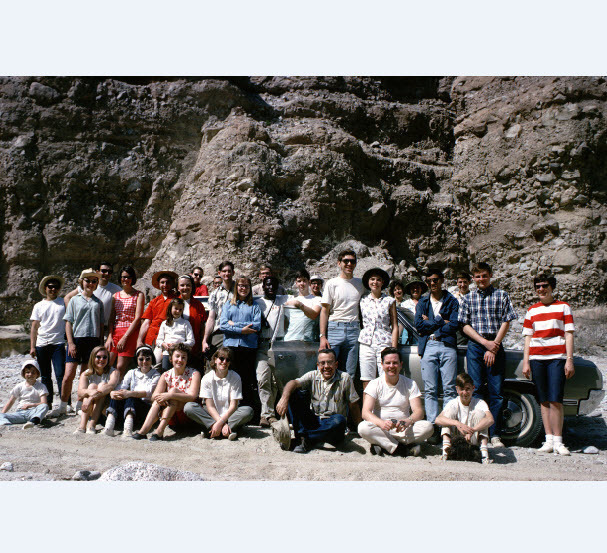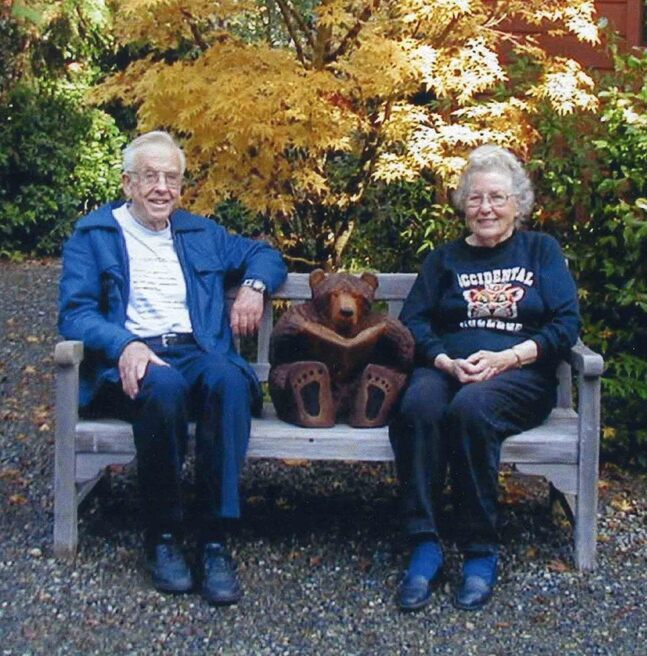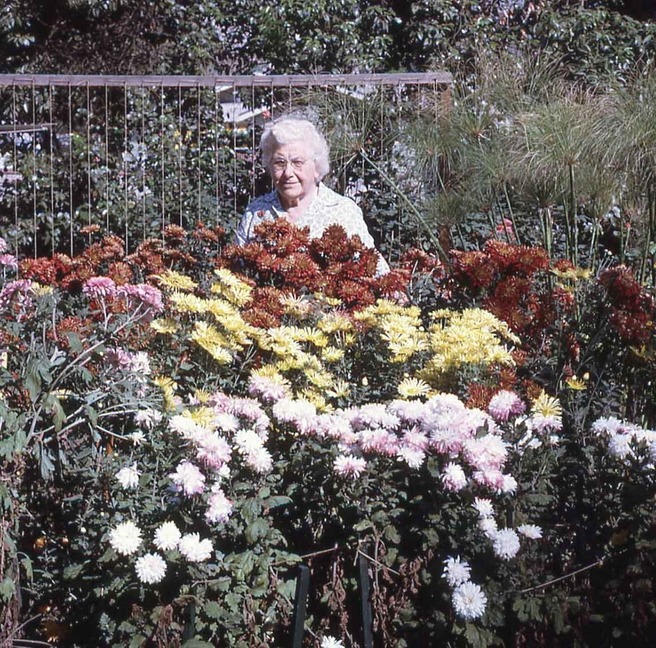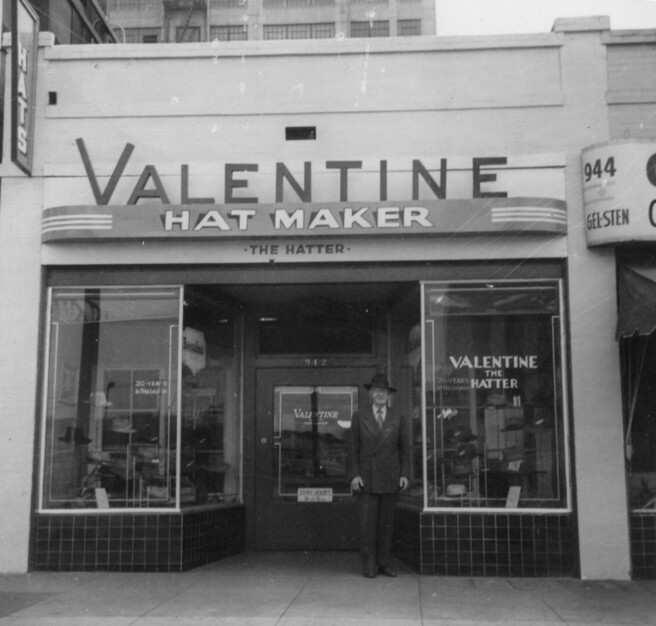Biology Field Trips
By Dave
Biology Department spring field trips were an important part John’s years at Oxy. In looking through John’s slides recently I found that some of the places we visitedover the years were: Red Rock Canyon, Alabama Hills, Darwin Falls, Death Valley & Saratoga Springs, Kingston Mountains, Devil's Punchbowl & the Hamilton Preserve, Hastings Reservation & Point Lobos, Figueroa Mountains, Mt. Palomar, Kelso Sand Dunes & Amboy Crater, Pinnacles National Monument (and the Pinnacles near Trona), Thousand Palms, Walker Pass & the Kern River, Salton Sea & Travertine Rock, Borrego Springs, Joshua Tree, Los Osos and of course Angeles National Forest and the cabin in Eaton Canyon.
One of the activities during the field trips was playing the Ann Miller game (she likes grass but she doesn’t like lawn, she likes summer but she doesn’t like winter, she likes floors and walls but doesn’t like ceilings). It was always fun to see participants figure out what she liked and didn’t like and come up with their own examples. I remember as if it was yesterday listening to Ann Miller being played inside the Eaton Canyon cabin when I was in my sleeping bag outside. I didn’t figure it out that night, but woke up the next morning thinking she likes Occidental but doesn’t like Oxy.
On some field trips, we had a contest for who could make up the best verse to “My Bonnie Lies over the Ocean.” One of John’s favorite verses was:
My bonnie went into the shark lab
The wonders of science to see
She inhaled and then she expired
Oh bring back my bonnie to me
I think his favorite verse was:
My bonnie posed for one of Mac’s pictures
She was young, blonde and pretty to see
By the time that the camera was focused
Her hair was as gray as can be
The funny thing is that in thinking about all the field trips, the ones I remember most vividly are the ones where something went wrong. One of the most memorable ones to me (besides the futile search for the elephant trees) was the time that we camped in Red Rock Canyon and started out the next morning to go up Last Chance Canyon to see the wildflowers. One of the cars would not start, so we left it in the campground and stuffed everyone into the remaining two cars. We drove up a bumpy dirt road to the end of Last Chance Canyon, but when we were ready to leave, the second car would not start. This left only John’s car to get everyone out of the canyon. However, when he got to his car, John realized that he had lost his keys when he was taking his 20 minute nap earlier in a grassy area. It took all of us quite a while to find the keys, and John was able to ferry groups out of the canyon. Hours later when the tow truck arrived at the car that wouldn’t start, it started on its own on the first try.
While picking your favorite field trip is somewhat like picking your favorite child, one of my favorite trips was in 1971, after I had graduated from Oxy. The trip started slowly for me because my car started overheating the night before we left and I had to get it fixed, and it took a while to get out of L.A. because of the detour around the interchange of the 5 and 14 freeways that had collapsed in the recent Sylmar earthquake. But the first night was spent in the Alabama Hills, one of my favorite places, which I have driven through and hiked within many times since. On our way into Death Valley, we stopped at Darwin Falls, a surprise waterfall up an extremely desolate canyon. In Death Valley itself, we stopped at Badwater, the Devil’s Golf Course and the sand dunes (of course, that’s were Dr. Wells’ had car trouble, but where we also had fun throwing a Frisbee around). We ended up at Saratoga Springs, an oasis in the middle of nowhere with its lake, pond (with pupfish) and tamarack grove. What a nice place.
There were 42 of us on this field trip. I remember this because I knew that with this many people, the probability of two having the same birth month and year was around 90%. So sitting around the campfire at Saratoga Springs, I bet the group that if this was not the case with this group that I would cook breakfast and clean up after it the next morning. Guess what. There were not matches and I ended up cooking for and cleaning up after 41 others. What fun.
I know these field trips had a great impact on all participants, especially me. I know that a lot of my love of nature and the outdoors came from visiting all the places we did on the spring field trips.





